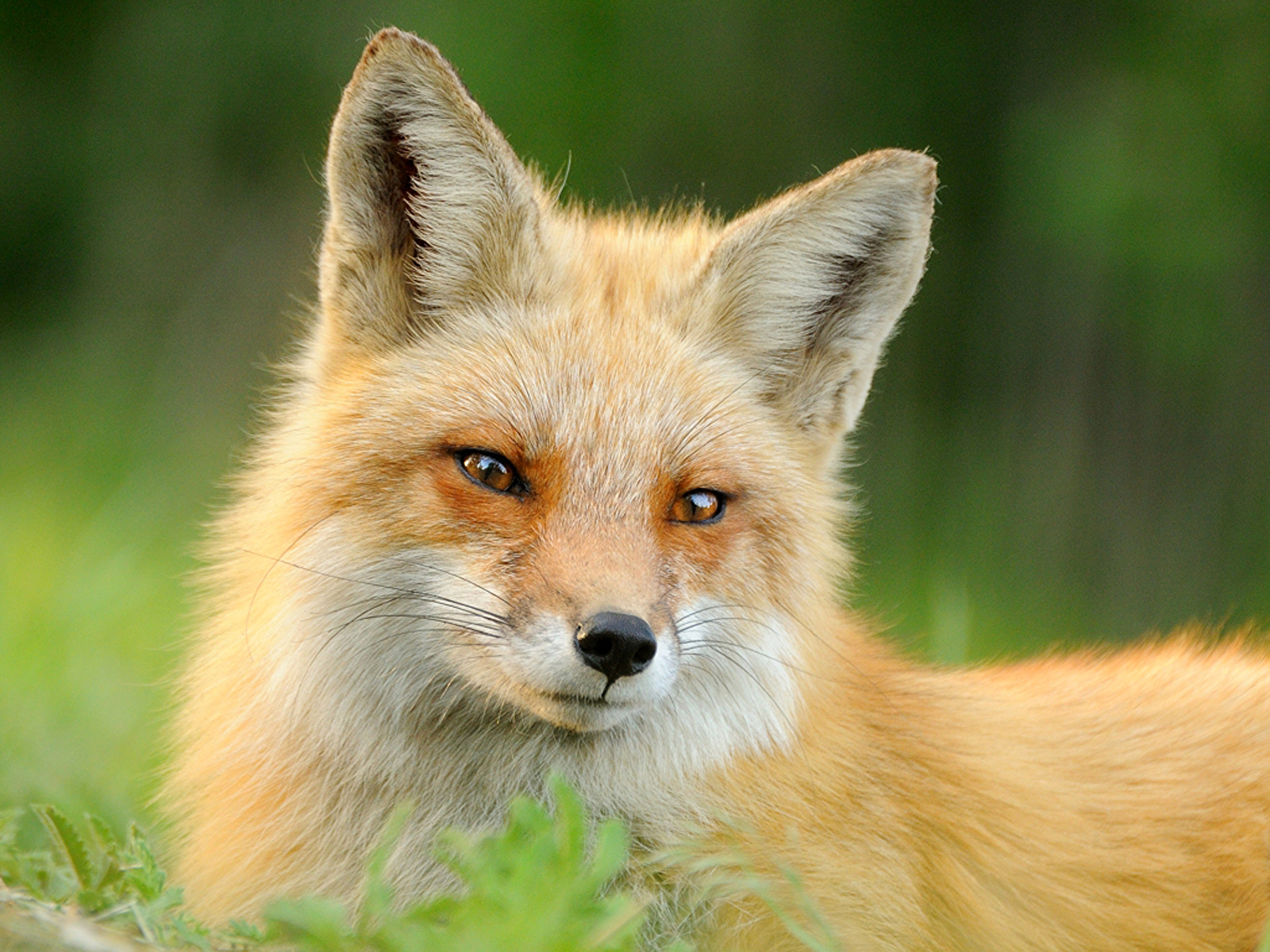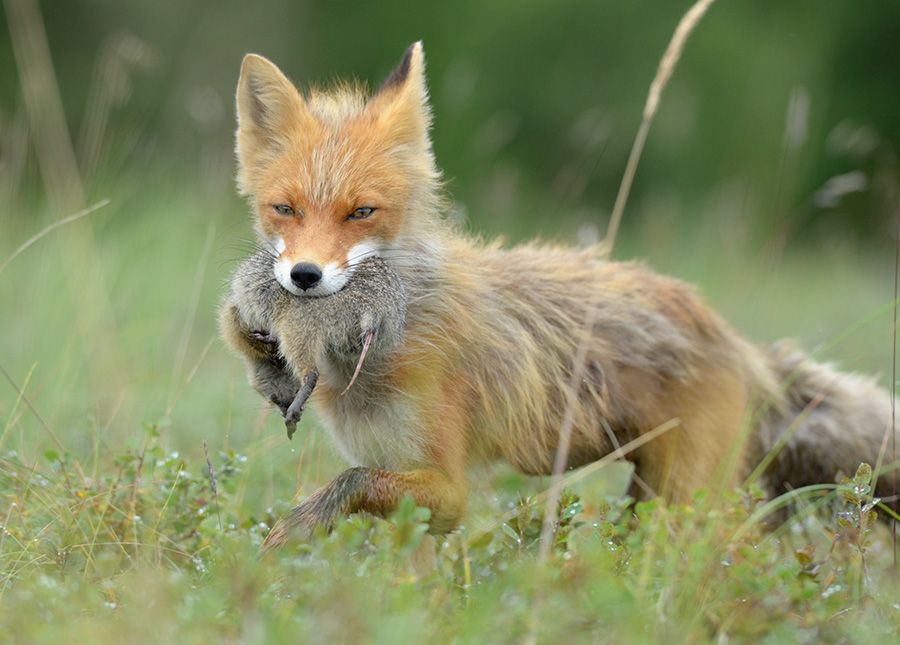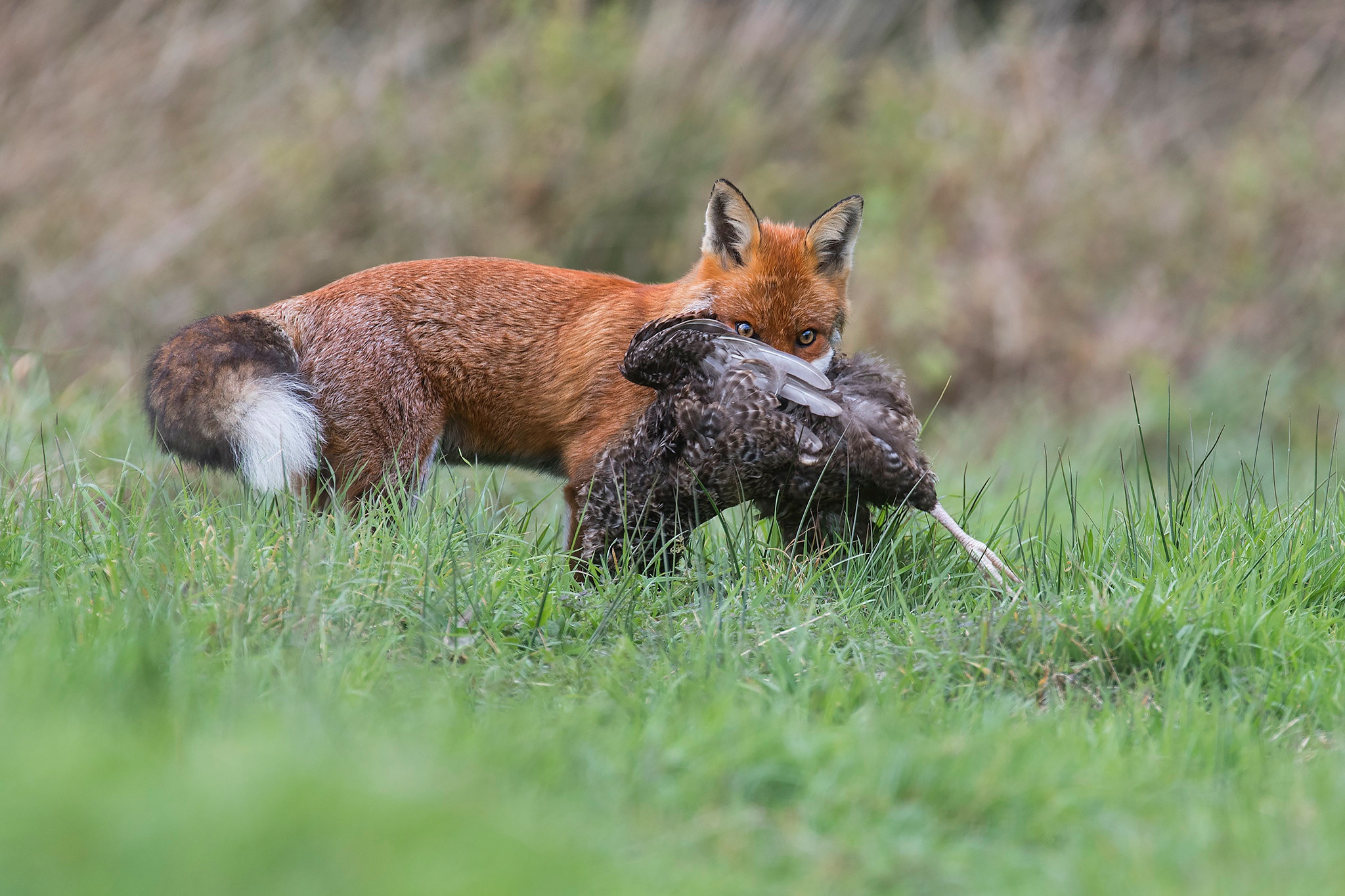A fox in the yard, no one is waiting for that. Foxes are known for their cunning and predatory nature. But do they really do as much damage as people think?
Species
There are several types of foxes, such as the Arctic fox and the desert fox. In some countries, there are only one species, which is simply called ‘fox’, the Vulpes vulpes. The range of foxes is large: they can be found throughout the northern hemisphere and also in Australia, where they were brought by humans.
Appearance
Although foxes are related to our domestic dogs, they have a cat-like appearance due to their large eyes and long whiskers. Their fur is red to brown-grey, with black areas on the legs and ears. Their muzzle is black and white, their tail thick with often a white tip. Although the tail makes its appearance imposing, in fact, a fox is not much bigger than a large cat. Adult fox males weigh about 6.5 kilograms, and the females an average of 5.5 kilograms.
Reading Suggestions: Cold virus, runny nose, and sneezing, what is that?
Tracks
Foxes are quite shy of people and hunt at night. That is why you hardly encounter them during the day. An exception to this, for unclear reasons, is the dune region between The Hague and IJmuiden. Because of the nocturnal hunts, you usually only notice foxes when they have visited the chicken coop, for example. The only way to spot them sooner is to look for tracks in soft ground or snow. They look similar to a dog’s but are narrower.
Robbing
Foxes like to eat rabbits. In addition, their menu consists of birds, waste from manure heaps, mice, and other small mammals. Urban foxes in England even eat earthworms, waste from compost heaps, and food from bird feeders.
A fox in the chicken coop often kills all the chickens, taking only one or two. The reason is that it is usually difficult for a predator to get food. Its natural reaction is to bite to death any animals that try to flee. In natural conditions, these are the sick or weak animals. In a closed pen, the animals continue to try to escape and the fox continues to bite.
Family Life
Although foxes hunt solitarily in a territory of an average of 100-200 hectares, they know through scent trails or barking whether known foxes are nearby. They usually sleep in a sheltered place, for example under and in the middle of dense bushes. Pregnant foxes sleep in a den.
They also camp there when the young are born. After about four weeks, the mother fox takes her young to a new den for safety reasons. If there is an immediate danger, she even divides her young over two burrows. After about five months, young foxes start looking for their own territory.
Sometimes foxes also stay with their parents. Usually, these are females, who help find food for the fox pups. When the mother dies, the half-sisters take over the upbringing of the boy.
How Do I Protect Chickens From Fox?
Fox is smart. They immediately notice a place where there may be something to eat. Free-roaming chickens, for example, are easy prey. Make sure that the hens’ night coop is hermetically closed or install electric fencing around the run at different heights. Another possibility is to protect them with a well-trained dog that runs loose at night in the yard or in the garden.































